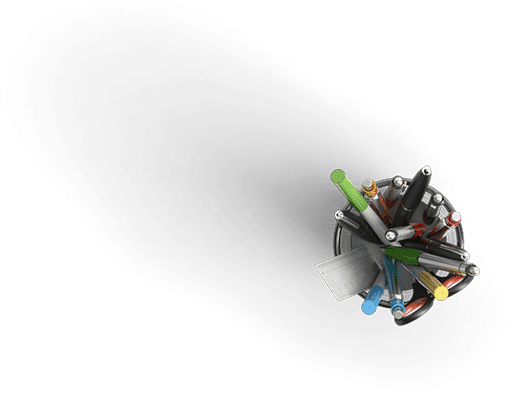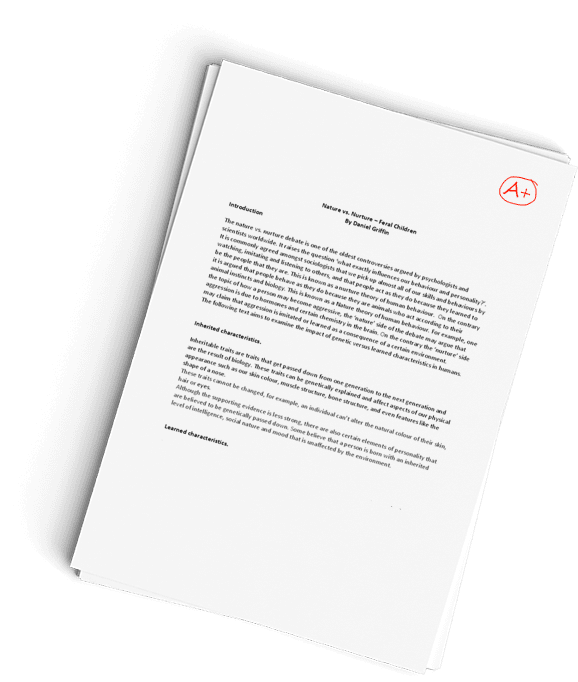PSY 200 NVCC Biology Labelling the Eye Diagram Paper
Description
1. Watch these two videos and write a one-paragraph summary/reaction to the videos:
Unformatted Attachment Preview
Brain Glossary
Read the definitions, then label the neuron diagram below.
axon – the long extension of a neuron myelin sheath – the fatty substance that surrounds and
that carries nerve impulses away from protects some nerve fibers
the body of the cell.
node of Ranvier – one of the many gaps in the myelin
axon terminals – the hair-like ends of sheath – this is where the action potential occurs during
the axon
saltatory conduction along the axon
cell body – the cell body of the
neuron; it contains the nucleus (also
called the soma)
nucleus – the organelle in the cell body of the neuron
that contains the genetic material of the cell
Schwann’s cells – cells that produce myelin – they are
dendrites – the branching structure of located within the myelin sheath.
a neuron that receives messages
(attached to the cell body)
Label the Eye Diagram
Human Anatomy
Read the definitions, then label the eye anatomy diagram below.
Cornea – the clear, dome-shaped
tissue covering the front of the eye. Pupil – the opening in the center of the iris- it changes size
Iris – the colored part of the eye – it as the amount of light changes (the more light, the smaller
controls the amount of light that
the hole)
enters the eye by changing the size Retina – sensory tissue that lines the back of the eye. It
of the pupil
contains millions of photoreceptors (rods and cones) that
Lens – a crystalline structure
convert light rays into electrical impulses that are relayed
located just behind the iris – it
to the brain via the optic nerve
focuses light onto the retina
Vitreous – a thick, transparent liquid that fills the center of
Optic nerve – the nerve that
the eye – it is mostly water and gives the eye its form and
transmits electrical impulses from shape (also called the vitreous humor)
the retina to the brain
1.
2.
3.
4.
5.
6.
7.
8.
9.
Parts of the Eye Definitions
__ Optic nerve
A. The opening at the center of the iris, which adjusts its
size
__ Retina
B. A clear part of the eye behind the iris that helps to focus
light or an image on the retina
__ Iris
C. Clear substance that fills the inside of the eye
__ Cornea
D. The colored part of the eye that regulates the amount of
light entering the eye
__ Pupil
E. The light-sensitive tissue lining at the back of the eye:
converts light into electrical impulses
__ Vitreous humor F. The small sensitive area of the retina that gives central
vision; It is located in the center of the retina and contains the fovea
__ Lens
G. The center of the macula that gives the sharpest vision
___ Fovea
H. The clear outer part of the eyeàfocusing system located at the front of the
eye
___ Macula
I. A bundle of more than a million fibers that carries visual messages from the
retina to the brain
The EAR Definitions
1. _____ anvil
A.
2. _____ cochlea
B.
3. _____ eardrum
C.
4. _____ Eustachian tube
D.
5. _____ hammer
6. _____ Nerves
E.
F.
7. _____ outer ear canal
G.
8. _____ pinna
H.
9. _____ semicircular canals I.
10. _____ stirrup
J.
three loops of fluid-filled tubes that are attached to the cochlea
in the inner ear; They help us maintain our sense of balance.
(also called the malleus) a tiny bone that passes vibrations from
the eardrum to the anvil
these carry electro-chemical signals from the inner ear (the
cochlea) to the brain
(also called the auricle) the visible part of the outer ear. It
collects sound and directs it into the outer ear canal
the tube through which sound travels to the eardrum
(also called the tympanic membrane) a thin membrane that
vibrates when sound waves reach it
(also called the stapes) a tiny, U-shaped bone that passes
vibrations from the stirrup to the cochlea. This is the smallest
bone in the human body (it is 0.25 to 0.33 cm long).
a spiral-shaped, fluid-filled inner ear structure; it is lined with
cilia (tiny hairs) that move when vibrated and cause a nerve
impulse to form.
(also called the incus) a tiny bone that passes vibrations from
the hammer to the stirrup.
a tube that connects the middle ear to the back of the nose; it
equalizes the pressure between the middle ear and the air
outside. When you “pop” your ears as you change altitude
(going up a mountain or in an airplane), you are equalizing the
air pressure in your middle ear.
PERCEPTION TERMS
1. _____
Retinal disparity
A.
2. _____
Convergence
B.
3. _____
Linear perspective
C.
4. _____
Interposition
D.
5. _____
Motion parallax
E.
6. _____
Perceptual Set
F.
7. _____
Phi Phenomenon
G.
8. _____
Inattentional blindness H.
9. _____
Change blindness
I.
10. _____
Choice blindness
J.
11. _____
Form Perception
K.
12. _____
Gestalt Laws
L.
A monocular cue to depth based on if one object blocks
the other, we perceive it as closer
A binocular cue as since our eyes see two images which are then
sent to our brains for interpretation, the distance between these two
images provides another cue regarding the distance of the object.
A monocular cue to depth based on the convergence of parallel
lines in two-dimensional representations
A binocular cue referring to the fact that the closer an
object, the more inward our eyes need to turn in order to focus.
The farther our eyes converge, the closer an object appears to be.
A monocular cue to depth based on the tendency of
images of closer objects to move faster than images of more distant
objects also stable objects appear to move
Johansson, et al., 2005 had 120 Pàshown two faces and had to
choose which was more attractive. When the face was switched
most participants did not notice the difference
failing to notice changes in the environment; i.e. not noticing a
confederate being switched
failing to see visible objects when our attention is directed
elsewhere
the sum of your assumptions and beliefs that lead you to expect to
perceive certain objects or characteristics in particular contexts
an illusion of movement created when two or more adjacent lights
blink on and off in quick succession
Set of rules describing the circumstances: similarity, proximity,
continuity, closure, and connectedness
Organization of the visual field into objects (figures) that stand out
from their surroundings (ground)
Purchase answer to see full
attachment

Have a similar assignment? "Place an order for your assignment and have exceptional work written by our team of experts, guaranteeing you A results."












